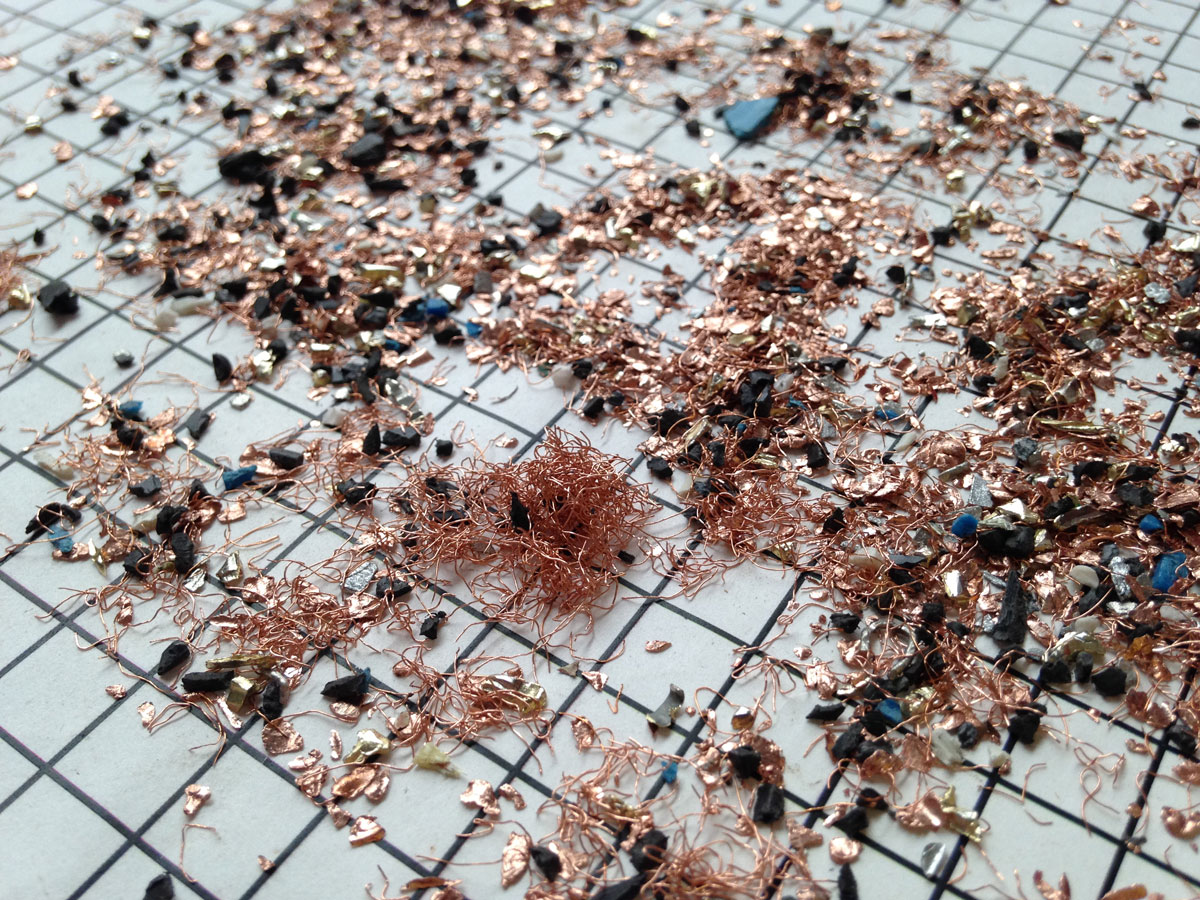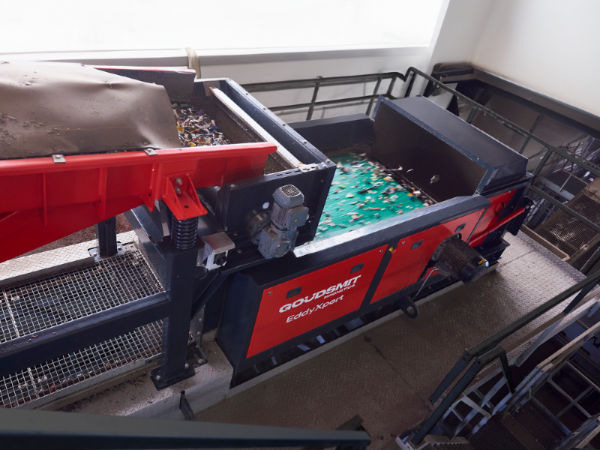Efficiency of eddy current systems
The efficiency of an eddy current separator is influenced by four factors: material properties, size, shape, and environmental conditions of the product flow. These factors are crucial for separating non-ferrous metals and optimising the separation process.
Material properties: Conductivity and Density
The electrical conductivity and density of a metal determine the effectiveness of separation. Metals with high electrical conductivity, such as aluminium and copper, generate strong eddy currents, providing powerful repulsion. However, the density of the metal also plays an important role, as heavier particles require more force to be ejected by the eddy currents. Overcoming the gravity acting on the particle determines how far it is launched. Lighter materials such as aluminium are more easily ejected from the product stream than heavier materials such as copper or stainless steel. Some examples are thus:
- Aluminium: due to its combination of high conductivity and low density, aluminium can be ejected with relatively low force, making it ideal for eddy current separation.
- Copper: copper has high conductivity, but its higher density requires more force to eject it, making separation slightly more difficult than with aluminium.
- Stainless steel: stainless steel has both low conductivity and high density, which makes separation by eddy current systems almost impossible. Other separation techniques are needed to separate this metal.
| Material | Electric Conductivity | Density | Conductivity/Density |
| σ = [1/Ω x m] | ρ = [kg/m3] | σ / ρ = [m2/kg x Ω] | |
| x 106 | x 103 | ||
| Non-magnetisable metals | |||
| Aluminium | 37,0 | 2700 | 13,7 |
| Magnesium | 21,7 | 1740 | 12,5 |
| Copper | 59,9 | 8960 | 6,7 |
| Silver | 62,1 | 10500 | 5,9 |
| Zinc | 16,9 | 7140 | 2,4 |
| Gold | 41,7 | 19320 | 2,2 |
| Brass | 15,2 | 8500 | 1,8 |
| Cadmium | 13,3 | 8650 | 1,54 |
| Tin | 8,7 | 7300 | 1,2 |
| Chrome | 7,7 | 7190 | 1,07 |
| Bronze | 7,1 | 8900 | 0,80 |
| Solder 50-50 | 6,7 | 9000 | 0,74 |
| Titanium | 2,3 | 4510 | 0,52 |
| Platinum | 9,4 | 21450 | 0,44 |
| Lead | 4,8 | 11360 | 0,42 |
| Stainless steel | 1,4 | 7800 | 0,18 |
| Magnetisable metals | |||
| Cobalt | 17,2 | 8850 | 1,95 |
| Nickel | 14,3 | 8890 | 1,61 |
| Steel | 5,6 | 7800 | 0,71 |
 Size and shape
Size and shape
The size and shape of the particles influence their ejection trajectories in the separator. Larger, uniformly shaped objects such as aluminium cans follow predictable ejection trajectories, which facilitates separation. Smaller or irregularly shaped objects, such as copper wire, have less stable ejection trajectories, which reduces the efficiency of the separation process. In addition, the orientation of particles with elongated shape also affects the ejection trajectory.
Fractional size refers to the average size of the particles in the material flow. The fraction size affects how eddy currents repel metal objects. Larger particles are generally ejected further than smaller particles because they have more mass on which the eddy current forces can act. This creates a clearer distinction in the ejection trajectories between different materials.
A uniform particle size distribution is essential for optimal separation. When there are large differences in particle size within the material flow, this can make separation difficult, as small particles can be covered by larger ones, preventing them from being launched by eddy currents.
In addition, the distribution of particles on the conveyor belt also has an influence. An even distribution in a single layer (monolayer) ensures that all particles are optimally exposed to the eddy currents. If the particles lie in a thick layer on the belt or are unevenly distributed, the efficiency of the separator is significantly reduced.
Environmental conditions
Environmental factors can significantly affect the performance of an eddy current separator:
- Humidity: moist materials may stick to each other or to the conveyor belt, hindering spreading and separation.
- Inconsistent product flow: variations in feed can lead to particle accumulation, resulting in failure to achieve the desired monolayer and less accurate separation.
- Wind: in outdoor installation, wind may disturb the ejection trajectories of the ejected particles, adversely affecting the adjustment of the separator.

Conclusion
The efficiency of an eddy current separator is determined by metal properties (conductivity and density), particle size and shape, and environmental conditions. Overcoming gravity plays a crucial role: lighter metals such as aluminium are ejected more easily than heavier metals such as copper. Moreover, a uniform fraction size and even distribution on the conveyor belt is essential for optimal separation. By optimally addressing these factors and minimizing environmental influences such as humidity and wind, you can significantly improve the separation performance.
